If you’re a gardener, chances are you’ve seen white spots on the leaves of your tomato plants before. Perhaps it’s been worrying you and you don’t know what it is or how to address it. Not to mention whether this condition could be threatening the health of your plant! Thankfully, help has arrived in the form of knowledge about what these white spots on tomato leaves are and some strategies for dealing with them. In this blog post we’ll explore the causes behind why these pesky little spots show up as well as some actionable next steps that can be taken to get rid of them in no time! So read on all you green thumbs out there – there’s a lot to learn!
What are White Spots on Tomato Leaves?
Leaf spot diseases are often indicated by the presence of white spots on tomato leaves. Various fungi and bacteria, such as leptosphaerulina, Alternaria, Cladosporium, Phytophthora, and Xanthomonas species, cause these diseases. The symptoms of these diseases include white to gray spots or patches on the leaves, which can cause them to yellow or become discolored. In severe cases, the foliage may wither and drop prematurely.

Fortunately, there are steps you can take to prevent and control these problems if they occur in your garden. It is important to remove infected leaves as soon as you notice them in order to reduce the spread of the disease.
How Can I Identify White Spots?
White spots on tomato leaves can be caused by many different types of fungi and bacteria.
For example, powdery mildew appears as a white powder or dusty coating on the surface of the leaves while downy mildew creates yellowish-green spots with fuzzy gray mold growing underneath them. Fungal spots are typically circular in shape while bacterial spots are usually angular or irregularly shaped. Additionally, some diseases may cause leaf spotting that looks like whitish flecks or brownish discoloration. [1]What Causes White Spot Disease?
White spot disease is caused by a fungal infection called Alternaria solani. This fungus infects the tomato leaves and stems, causing spots that are white in color with a yellow halo around them. The most common symptom of this disease is the appearance of these white spots on the leaf surface. Other symptoms may include browning and curling of leaves, stem tip dieback, and fruit rot.
In order to reduce the risk of infection from this fungus, it’s important to practice good garden hygiene such as removing any dead or diseased plant material from your garden and avoiding contamination from other infected plants. Additionally, proper irrigation techniques can help reduce the spread of the fungus and allow for more efficient absorption of water and nutrients.
How Does the Disease Spread to Tomatoes?
The most common way for white spots to spread to tomatoes is through infected seed. If you buy or save seeds from a plant that has the disease, it may carry over and infect other plants in your garden. White spots can also be spread by contaminated soil and tools, so make sure to clean all of your gardening equipment between uses if you’ve had an outbreak in the past.
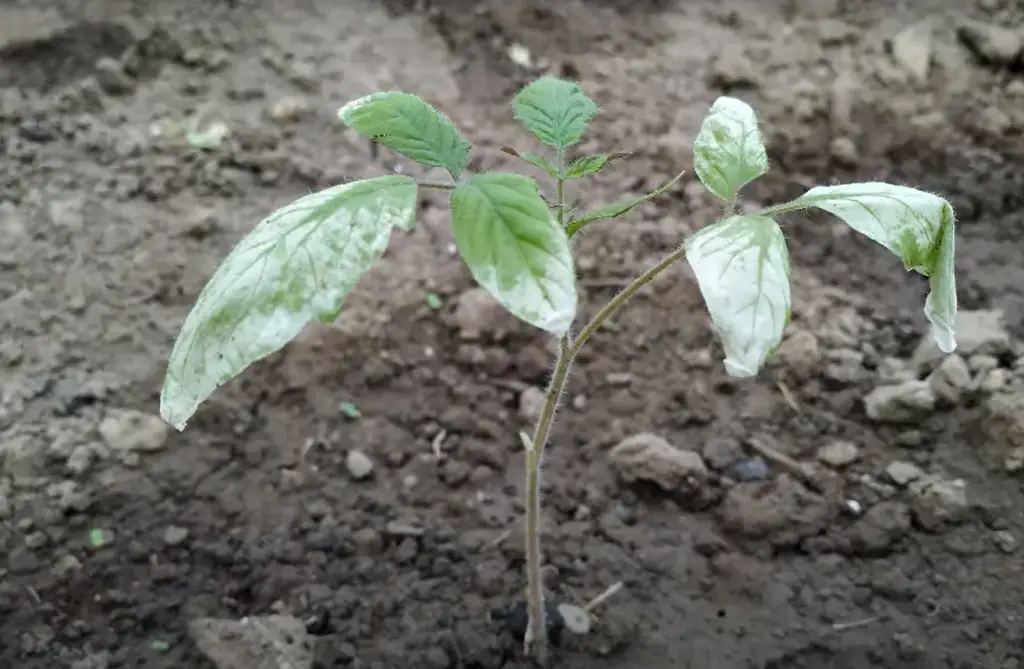
Additionally, spreaders such as aphids and thrips can transmit the disease from one tomato plant to another. It’s important to identify any signs of infection early on and take preventative measures before it spreads too far.
Cultural Control Practices for Avoiding White Spot Diseases
Crop Rotation
This is a widely used cultural practice for reducing the spread of white spot diseases. Crop rotation involves planting different crops in each season to reduce the build-up of disease organisms in one area. For example, if tomatoes are planted in an area where white spots have previously been observed, it is beneficial to rotate the crop with onions or potatoes in future seasons because these crops are less susceptible to white spot diseases. [2]
Avoid Overwatering
Overwatering can increase the severity of white spot diseases and should be avoided. Proper soil moisture levels should be maintained by watering only when necessary and not overwatering. Making sure that there is good drainage near your plants will also help to prevent root rot caused by excessive moisture.
Sanitize tools
Any gardening tools used should be properly sanitized after use to avoid the spread of white spot diseases. This includes pruners, shovels, and trowels. Tools can be disinfected with a solution of one part bleach to nine parts water.
Check Planting Stock
Whenever possible, it is important to purchase disease-free planting stock from a reliable source. This will help ensure that any new plants or seedlings that you introduce into your garden are free from any harmful diseases or pests.
Cleaning Up Garden Debris After Harvesting
Once your tomatoes have been harvested, it’s important to remove all remaining debris from your garden. This includes any plants that might be harboring pests or diseases that could spread to the next year’s crop. It is also necessary to get rid of any tomato foliage that has white spots on its leaves.
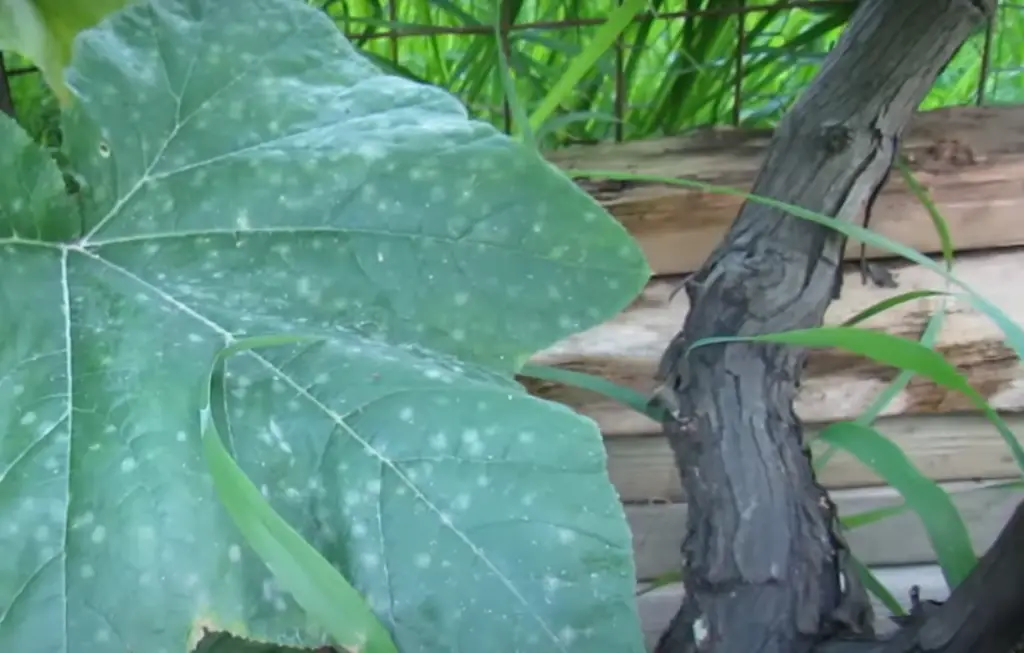
Dispose of this plant material by placing it in a plastic bag and throwing it away, as opposed to putting it in your compost pile. In addition, you may want to clean up weeds and other garden debris around the area where your tomato plants were growing, so as not to provide a breeding ground for potential insect pests or disease organisms.
Mulching with Plastic Sheeting or Newspaper
Covering the area where your tomatoes were growing can act as a barrier to prevent new pests and diseases from entering the soil. If you choose to use plastic sheeting, make sure it is of high quality and thick enough so that insects will not be able to crawl through. On the other hand, newspaper can also work well if it is applied thickly (3-4 layers) and weighted down with rocks or bricks.
Remove and Destroy Infected Plants
If you find tomato plants with white spots on the leaves, it is important to remove and destroy them as soon as possible. Doing so will help prevent the spread of disease to other plants in your garden. It is also a good idea to move healthy plants away from infected ones, just in case any pests or other organisms are still lurking nearby.
Biological Control for Treatment of White Spot Disease
Biological control is another effective method for treating white spot disease in tomato plants. This approach utilizes natural predators, such as beneficial insects, to manage populations of the disease-causing pest. Some species of parasitic wasps and predatory mites are known to feed on the eggs and larvae of pests that cause white spots on tomato leaves. To use this method, gardeners can purchase these beneficial insects from local nurseries or online suppliers and introduce them into their garden. The beneficial insects will then be able to establish a population in the garden that will keep pest populations under control, reducing the incidence of white spots on tomato leaves due to pest damage.
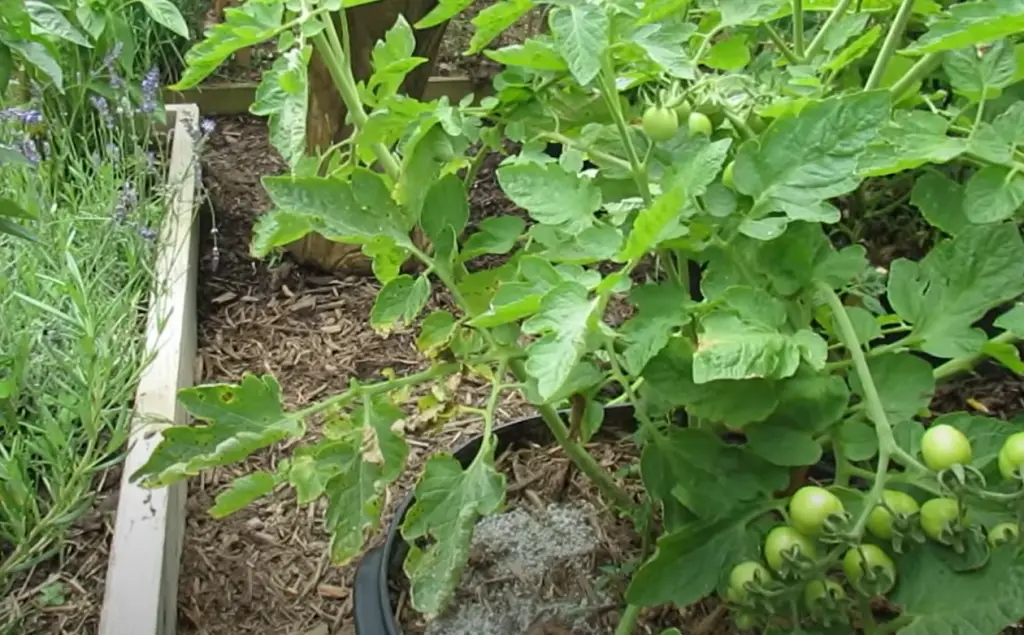
Another advantage of using biological controls is that they have no negative effects on humans or other organisms. They also rarely develop resistance to pesticides, making them an effective and safe way to manage white spot disease in tomato plants over the long-term. Finally, this approach can be used in conjunction with other methods for treating white spots on tomato leaves, such as trimming off affected foliage or applying fungicides. This combination of treatments can help ensure that your tomato plants stay healthy and free of white spots. [3]
With proper implementation and regular monitoring, you can keep your tomato plants pest-free and enjoy their delicious fruits for months to come!Chemical Control Methods for Treating White Spot Disease
Fungicides
Fungicides are chemicals used to control fungi and fungal diseases. They can be applied to tomato plants as a spray or dust. However, fungicides must be applied at the correct time in order to be effective against white spot disease. Before applying a fungicide, ensure that the product is suitable for tomatoes and read all instructions on the label carefully. It is important to follow directions precisely or the fungicide may not work properly or cause harm to your plants.
Copper-Based Sprays
Copper-based sprays are effective at controlling white spot disease in tomatoes.
The copper helps to protect tomato plants from fungal infection by creating a barrier between the plant and fungus spores. Copper products are generally safe for use around humans and animals, but care should be taken when applying these products near aquatic life, such as fish ponds and streams. [4]What Should I Do if My Tomatoes Become Infected?
If your tomatoes become infected with white spots, it is important to act quickly. The first step is to remove any affected leaves. This should be done using a pair of sterile pruning shears or scissors and gloves to prevent the spread of the infection. Once all affected leaves are removed, dispose of them in a sealed bag and put them in the trash.
Next, you will need to treat your tomato plants with an appropriate fungicide. It’s important that you follow all directions on the package and use a product labeled for use on tomatoes.
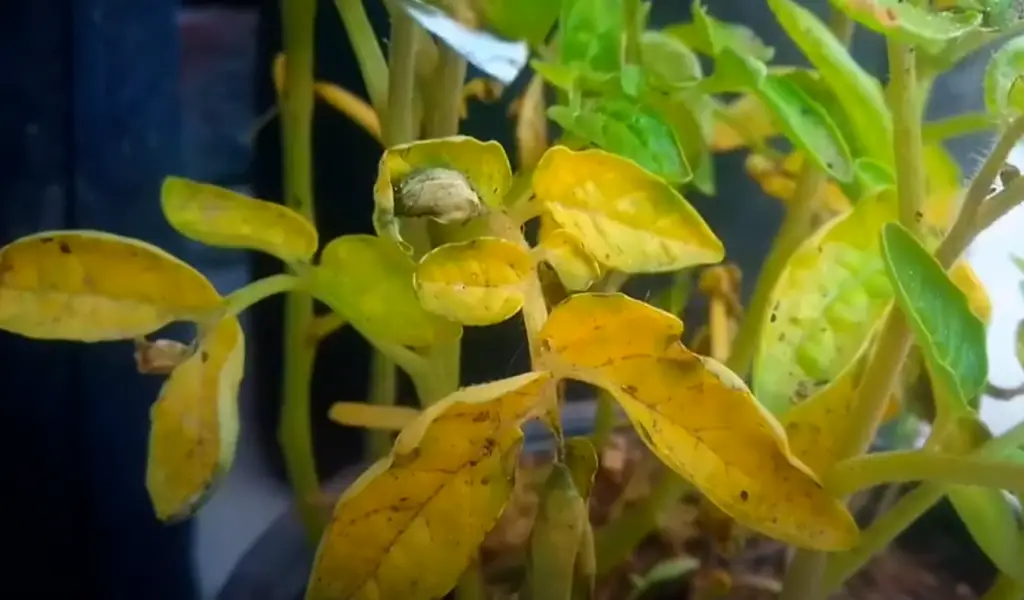
Fungicides work best when applied late in the day or early evening so that they don’t wash away in direct sunlight. You may need to repeat this treatment several times over the course of a few weeks to ensure that the infection has been eliminated.
Finally, practice good garden hygiene to prevent future infections. This includes disposing of infected plant debris and avoiding overhead watering to reduce humidity in your garden. Keeping your tomato plants healthy with proper nutrition and care can also help prevent white spots from appearing in the first place.
With these steps you can protect your tomatoes from white spot disease and enjoy a bountiful harvest of delicious fruit! [5]
Can I Eat a Tomato with Moldy Leaves?
No, you should not eat a tomato with moldy leaves. Tomato plants that have been infected with white spots are often more susceptible to disease and pest infestations as well. Eating these tomatoes can cause food poisoning, stomach upset or other illnesses, so it’s best to avoid them. In addition, the mold could spread to other parts of the plant or even your kitchen if you don’t take steps to prevent it from spreading. If you find a tomato with white spots on its leaves, it is important to remove it from your garden and dispose of it properly. It is also important to thoroughly clean any tools that were used in contact with the affected plant before using them on healthy plants again. Taking these precautions will help keep your garden healthy and safe for eating.
What Can I Do to Prevent White Spots on Tomato Leaves?
Prevention is the best cure. To prevent white spots on tomato leaves, start by making sure your plants have proper sun and moisture levels. Try to place them in a spot that gets full sunlight for at least six hours each day. Consider investing in a timer-controlled water irrigation system so you can make sure your tomatoes are getting the right amount of water without over-watering them.

Mulching around the base of your tomato plants can also help keep their leaves dry and less vulnerable to fungal diseases like those that cause white spots. Organic materials such as grass clippings or shredded bark work well as mulch – just be sure to use enough so that it’s at least an inch thick.
Finally, make sure to practice good garden hygiene. After pruning off diseased leaves, be sure to properly dispose of them so they don’t spread the disease. If your plants are already showing signs of white spots, then avoid handling them as much as possible so you don’t inadvertently spread the disease further.
By following these steps, you can help prevent white spots from appearing on your tomato leaves and keep your plants healthy and productive for years to come! [6]
FAQs
What are the consequences of white spot disease?
White spot disease can be damaging to tomato plants and result in reduced yields. The spots may cause discoloration, wilting, and even death of the leaves. In some cases, the entire plant may need to be destroyed if left untreated.
Are there any natural remedies for treating white spot disease?
Yes, there are several natural remedies you can use to treat white spot disease. These include using neem oil or a mixture of garlic and water as a foliar spray. You can also use baking soda mixed with water as a fungicidal drench for the soil around your tomato plants. Additionally, maintaining good air circulation around your tomatoes by avoiding planting too close together and providing adequate ventilation can help prevent white spot disease from occurring in the first place. Finally, ensuring that your tomato plants get plenty of sun and are kept clean and free of debris can also be effective in preventing infection. If all else fails, consider removing affected leaves to reduce the spread of the disease. It is important to practice good hygiene and quickly discard any infected plant parts in order to prevent the spread of disease to other plants. By following these steps, you can effectively treat white spots on tomato leaves and keep your tomato plants healthy.
How long does it take for a tomato plant to recover from white spots?
The amount of time it takes for a tomato plant to recover from white spot disease depends on several factors. If the infection is mild and caught early, the plant may be able to bounce back with minimal damage. However, if the infection is severe or left untreated, it can take weeks or even months for the plant to heal.

Additionally, the severity of the climate can play a role in how long it will take for your plant to fully recover; warmer temperatures promote faster healing while cooler temperatures can prolong recovery time. Allowing adequate air circulation and sunlight can also help speed up the recovery process. Finally, using natural remedies such as neem oil or garlic spray and avoiding overcrowding your plants are key ways to prevent future outbreaks of white spot disease.
Are other vegetables susceptible to white spot diseases?
Yes. White spot disease is a fungal infection that affects many vegetables, including cabbage, broccoli, cauliflower, kale, and other members of the brassica family. Other susceptible crops include spinach, lettuce, peppers, potatoes, eggplants, cucumbers and squash. In addition to tomato plants, white spot disease can also affect ornamental flowers such as roses and carnations. The symptoms will vary from plant to plant but can generally be identified by small circular spots on the leaves or stems of affected plants. As with tomatoes, maintaining good air circulation is key in preventing an outbreak of white spots on any vegetable you are growing in your garden. Additionally, avoiding overcrowding and providing adequate sunlight are essential practices for keeping your plants healthy and disease free.
What is the best way to prevent white spots on tomato leaves?
The best way to prevent white spots on tomato leaves is to make sure that there is adequate air circulation within the garden or container. Plant plenty of healthy plants in a space that allows for air movement and proper ventilation. Additionally, be sure to water at the base of the plant and avoid overhead watering, as this can encourage fungal conditions. If you are growing tomatoes in containers, make sure they have adequate drainage holes and use a quality potting soil with good drainage capabilities. Lastly, practice good hygiene when handling tomato seedlings by using disposable gloves and disinfecting any tools used to work with infected plants. Following these tips will help ensure your tomato plants remain disease-free!
Does baking soda help tomato plants?
Baking soda can help tomato plants to some extent. It can be used as a fungicide to fight off certain diseases, including early and late blight. However, it is important to note that baking soda should not be used on its own, but rather in combination with other products such as compost tea or neem oil. Applying baking soda alone may cause more damage than good to the plant due to salt buildup and pH imbalance. Additionally, baking soda will not eliminate white spots caused by pathogens such as Tomato spotted wilt virus (TSWV). In this case, removing affected leaves is the best option for controlling the spread of TSWV. Therefore, it is always advised to consult an expert before using any form of treatment for tomato plants.
Is vinegar good for tomato plants?
Vinegar can be used as a mild fungicide to help combat certain diseases, such as early and late blight. However, it should only be used in combination with other products such as compost tea or neem oil. Applying vinegar alone may cause more damage than good to the plant due to salt buildup and pH imbalance. Additionally, vinegar will not eliminate white spots caused by pathogens such as Tomato spotted wilt virus (TSWV). In this case, removing affected leaves is the best option for controlling the spread of TSWV. Therefore, it is always advised to consult an expert before using any form of treatment for tomato plants.
Are coffee grounds good for tomatoes?
Yes, coffee grounds can be a great addition to tomatoes. Coffee grounds are rich in nitrogen and other nutrients that can help tomatoes grow robustly. In addition to providing fertilizer, coffee grounds also act as a mulch that helps retain moisture and prevent weeds from growing around your plants. To use coffee grounds on your tomatoes, simply scatter them around the base of tomato plants or mix them into the soil before planting. Be sure not to over-apply them, however; too much nitrogen can actually burn tomato leaves and stunt their growth.
What is the best fertilizer for tomato plants?
The best fertilizer for tomato plants is one that has a balanced ratio of nitrogen, phosphorus, and potassium. A good all-purpose fertilizer with an NPK ratio of 10-10-10 can be used to give tomatoes the nutrients they need. For more specific issues, consider using a product such as fish emulsion or sulfur-coated urea to target particular deficiencies. Additionally, it’s important to pay attention to the pH levels in your soil; tomatoes prefer slightly acidic soils (around 6.0 – 7.0). If necessary, you can adjust the pH of your soil by adding lime or sulfur before planting.
Useful Video: Tomato Leaves Turning White (Tomato Sunscald)
Conclusion
In conclusion, white spots on tomato leaves can be caused by fungal diseases. To prevent and control these diseases, gardeners should practice good sanitation techniques. This may include removing infected plant debris from the area, destroying affected plants, and using a fungicide spray or dust. Cultural practices such as proper water management and providing adequate air circulation around the plants can also help to reduce fungal problems. Ultimately, the best way to deal with white spots on tomato leaves is to stay vigilant and act quickly if any signs of disease are noticed. With careful attention and early intervention, gardeners can maintain healthy tomato plants free of white spots.
References:
- https://plantly.io/plant-care/white-spot-on-tomato-leaves/
- https://www.tomatobible.com/white-spots-on-tomato-leaves/
- https://backyardgardenersnetwork.org/white-spots-on-tomato-leaves/
- https://www.archute.com/white-spots-on-tomato-leaves/
- https://gardeningzeal.com/white-spots-on-tomato-leaves/
- https://gardeninginside.net/white-spots-on-tomato-leaves/








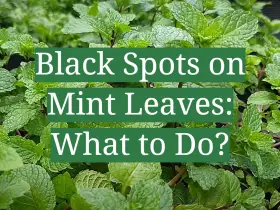
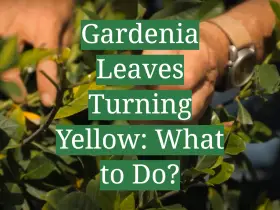
Leave a Reply
View Comments